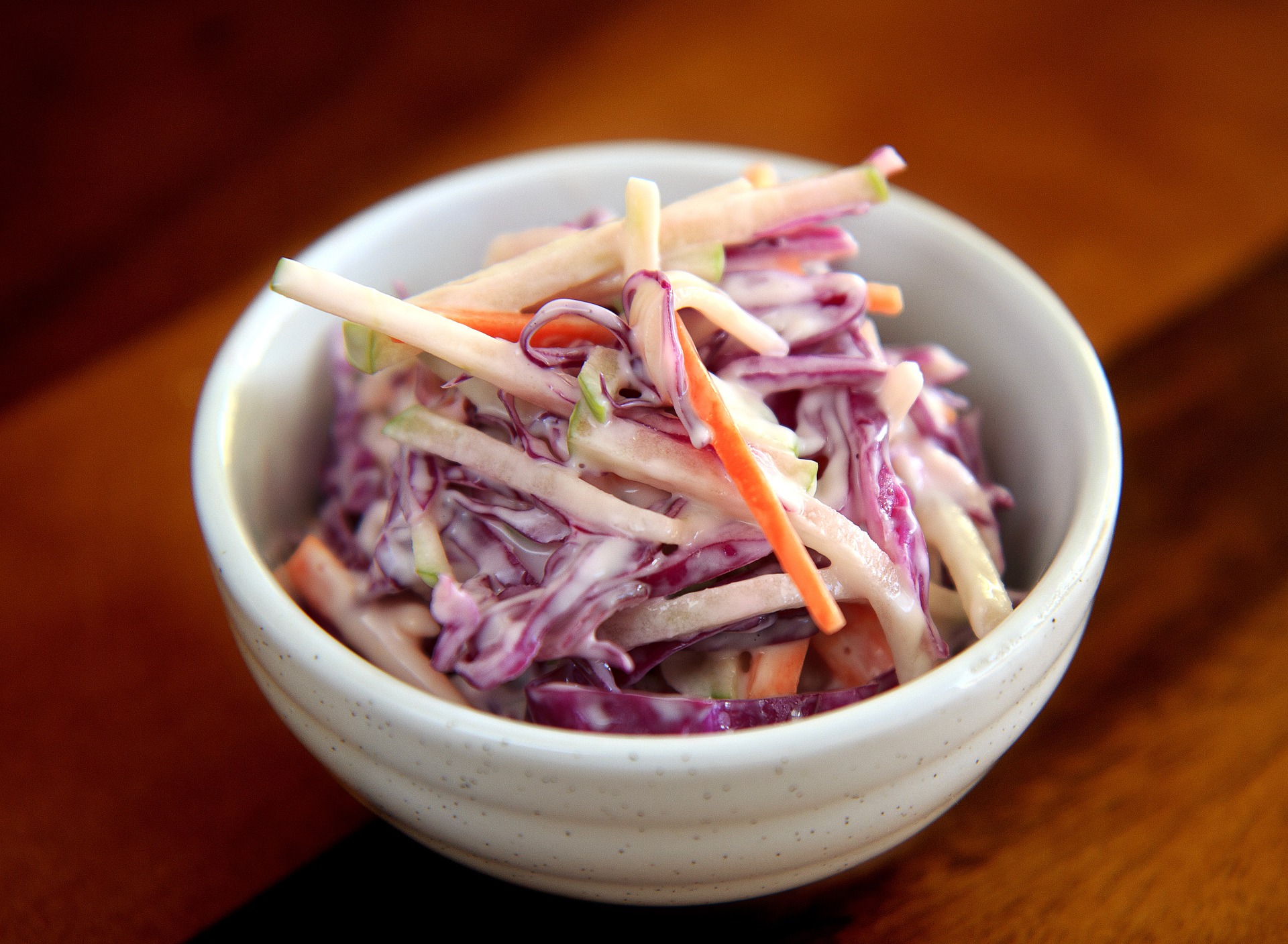I think coleslaw is almost making a comeback.
It is undoubtedly still a shoved-aside side item at picnics and diners: “It’s always there but rarely thought about.”
On the other hand, there are many exciting variations of coleslaw springing up, such as broccoli slaw. Broccoli slaw can come in its own bag, or you can shred your own broccoli.
Of course, traditional coleslaw’s main ingredient is shredded cabbage. Let’s find out where coleslaw originated.
Shredded cabbage can be traced back as far as the ancient Romans, who enjoyed the cruciferous vegetable with melted butter, vinegar, and oil.
The definition of the dish indicates that it is “usually moistened with a mayonnaise dressing;” mayonnaise was not invented until 1756.
If we’re being nit-picky though, the definition says “usually.” Therefore, we can technically consider coleslaw to have been created during ancient times.
However, coleslaw as we typically think of it – that is, with mayonnaise – was brought about by the Dutch. Dutch immigrants settled in New York (New Amsterdam at the time), growing cabbage around the Hudson River. In fact, New York State is still the number one producer in the nation of cabbage.
The Dutch introduced to their new land”koosla.” “Kool” was the Dutch word for cabbage, and “sla” salad. Overtime, koosla was Americanized into coleslaw. Coleslaw first appeared in print in 1785, 29 years after the creation of mayonnaise.
Today, coleslaw is often paired with hot dogs, hamburgers, and sandwiches. In Sweden, they serve it with pizza.
The reason why coleslaw has developed a mediocre reputation at best is likely because this is one of those dishes that you must have prepared correctly. And, it needs to be eaten fresh. Store-bought or fast food variety coleslaw just isn’t the same.
Furthermore, coleslaw is ideally chilled overnight, allowing the dressing to infiltrate the vegetables. But, no one likes a super soggy coleslaw, either.
When done correctly coleslaw can be excellent. Some say the trick is salting beforehand, to draw moisture out of the vegetables.
Shredded carrots in addition to the cabbage can make up coleslaw. Often red cabbage or red onions are used as well, which bring a nice touch of color. Although, they can turn the dressing pink. The dressing is often creamy and tart, and mayonnaise-based.
Mark Bittman in his cookbook says, “. . .take shredded cabbage and combine it with mayo and maybe a little lemon juice. This version is far more flavorful with far less fat.”
Indeed, there is something to be said about a traditionally prepared classic coleslaw, with very few ingredients. To get the basic elements of coleslaw creation down, check out SeriousEats.com’s breakout.
If you’re into experimenting, give these recipes a try:

Interesting. Here in Charlotte you can get coleslaw on almost anything. In fact, when I order a fish sandwich or hot dog from a local quick food place I have to say “without the slaw” when I order it or they’ll put it on.
It’s interesting how coleslaw is popular in the south, when it originated in the north.
Broccoli slaw is a food cost saver invented by a chef who wanted to use the otherwise inedible stems of the plant after the florets were used for service!